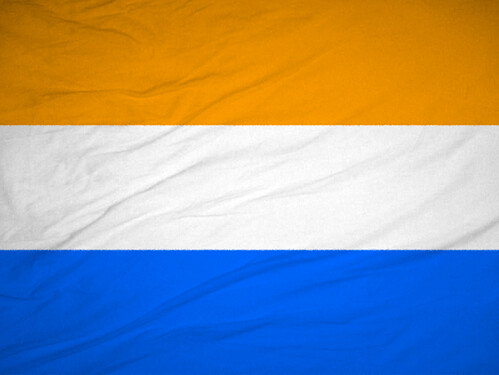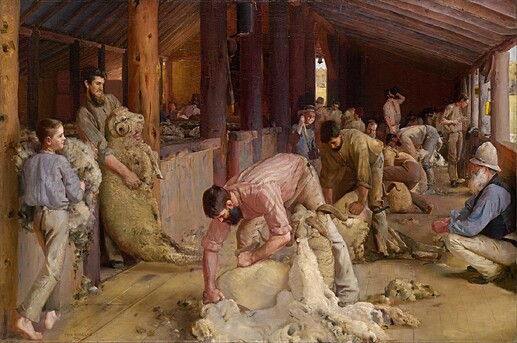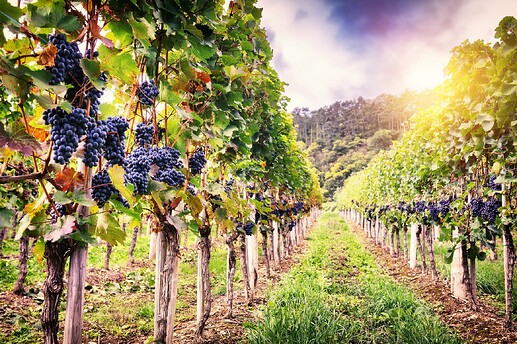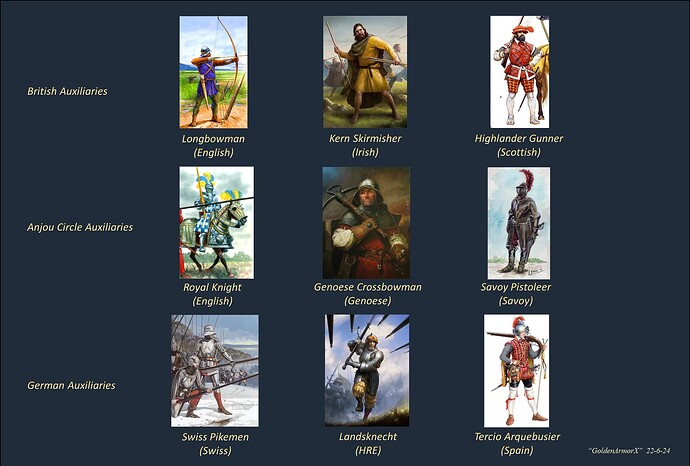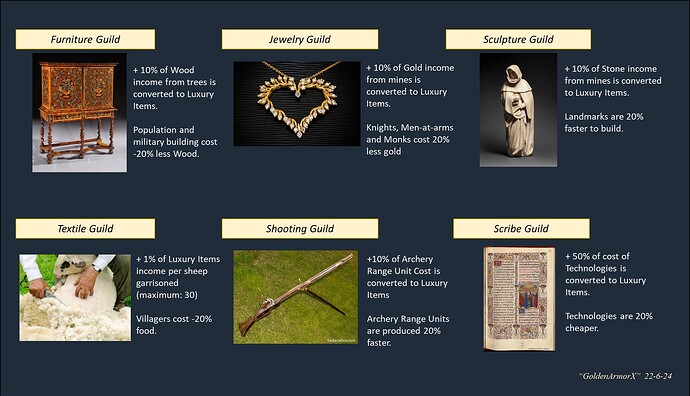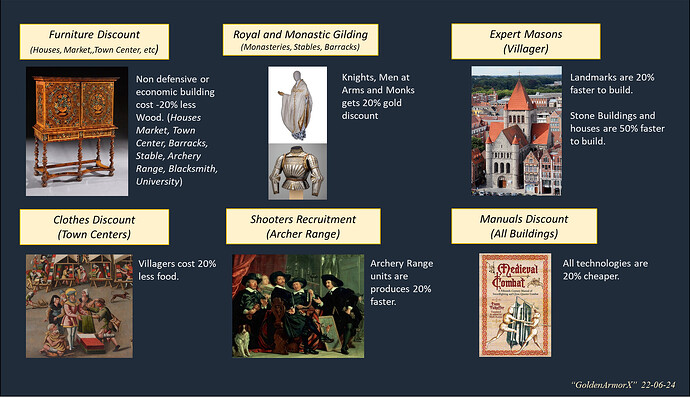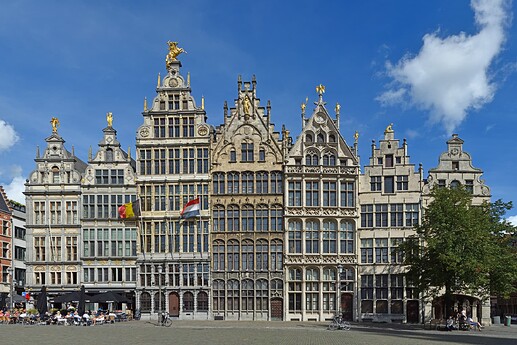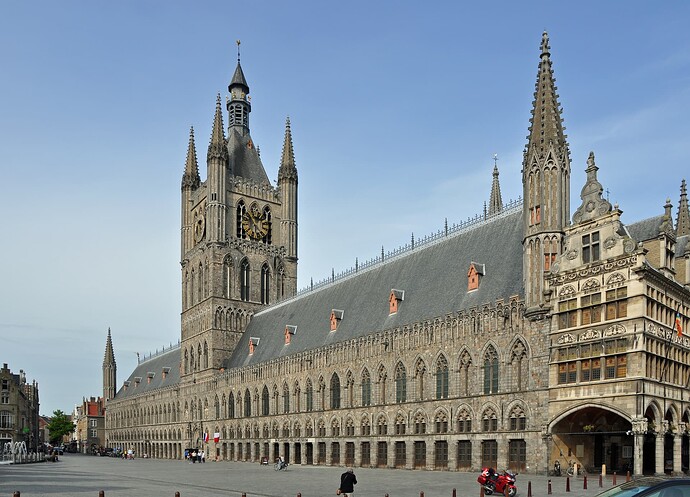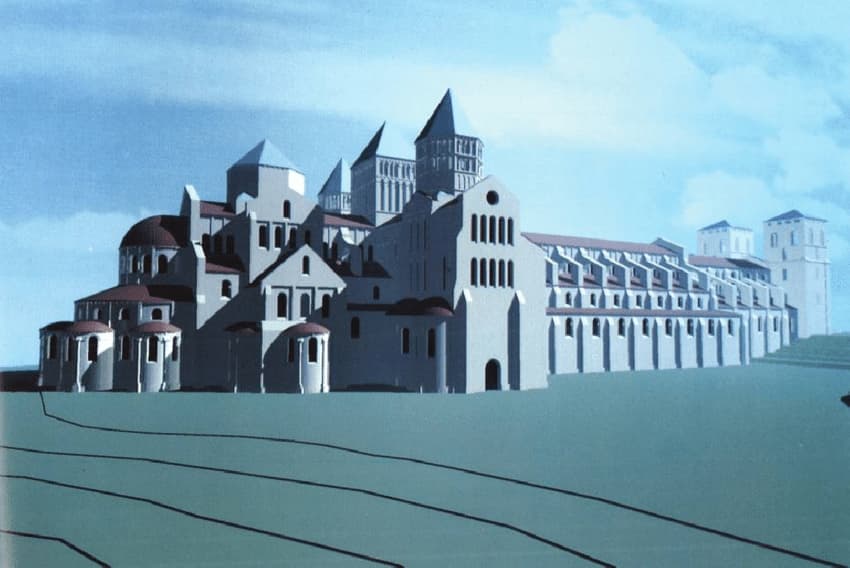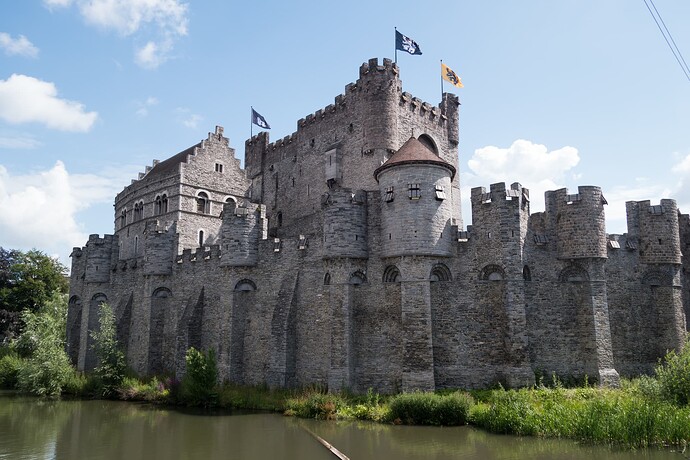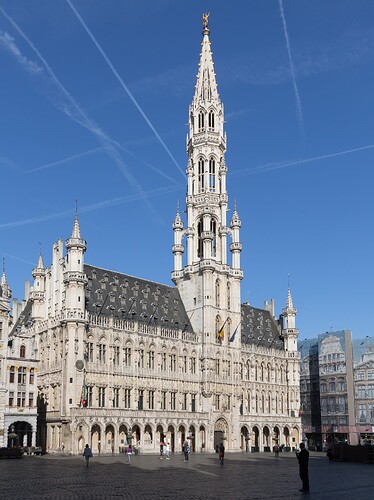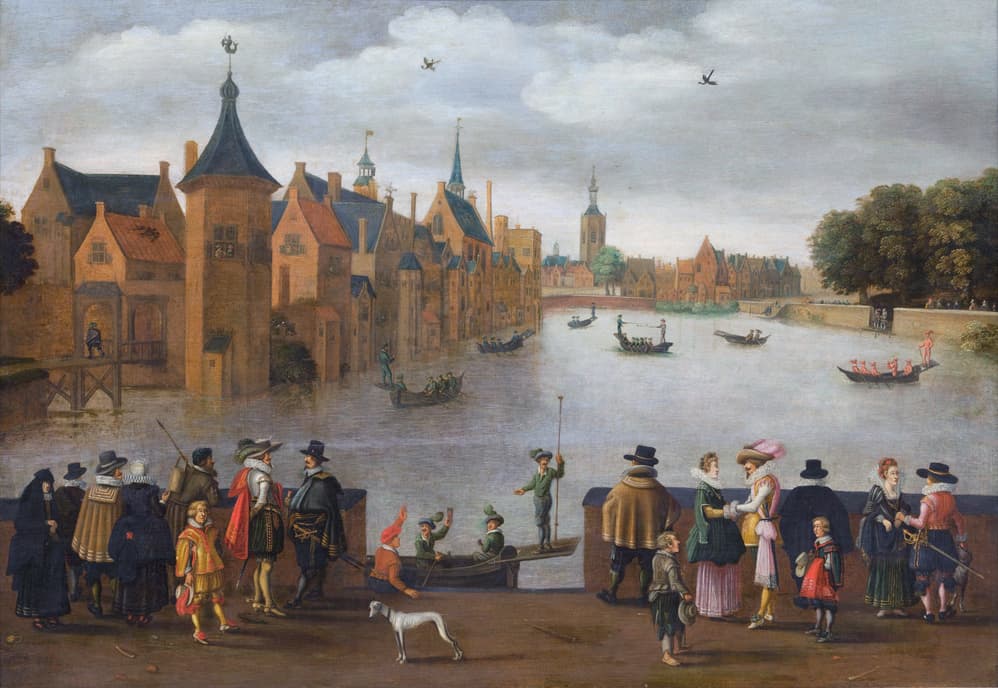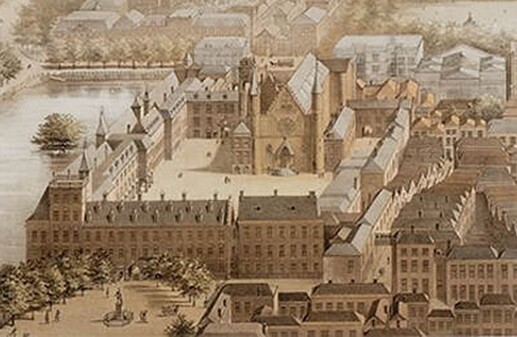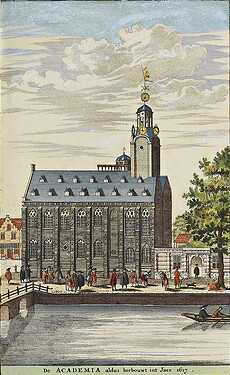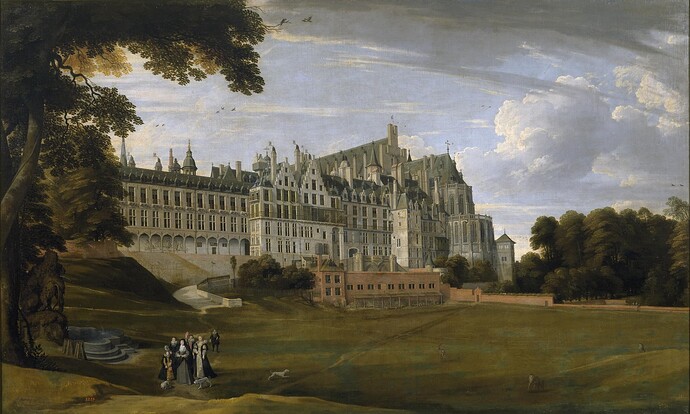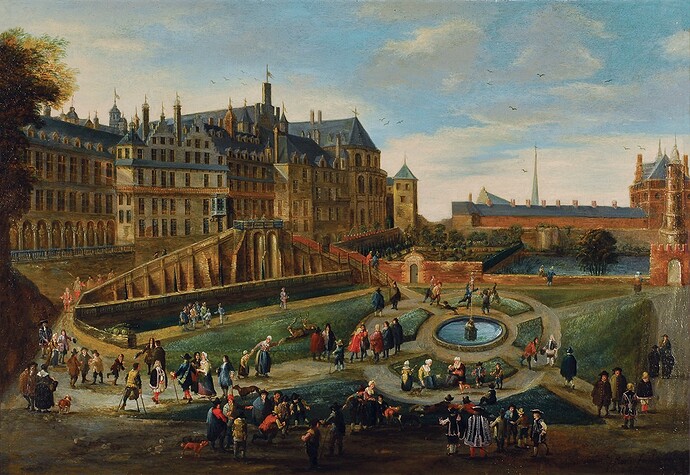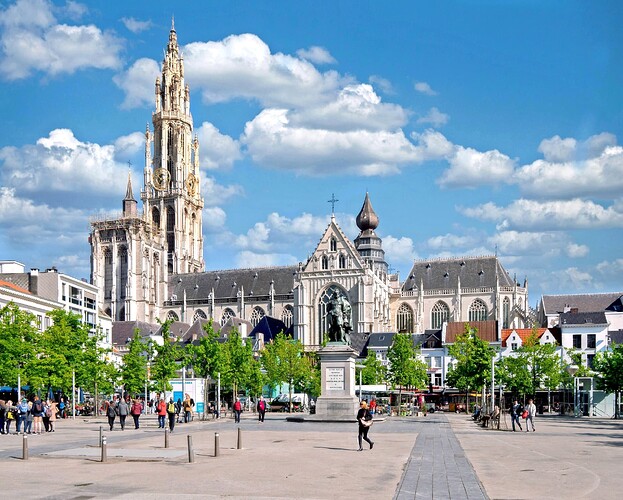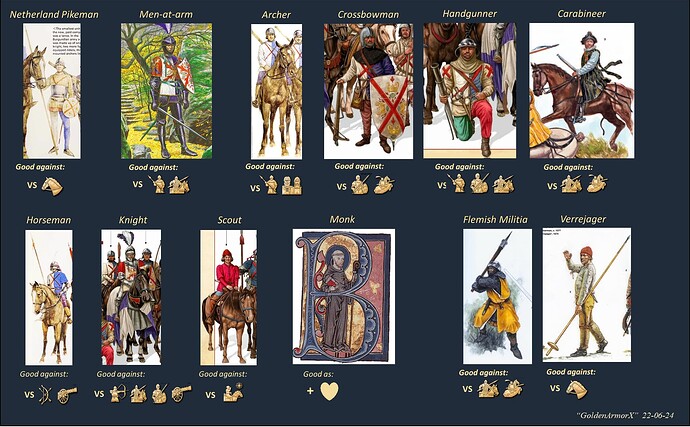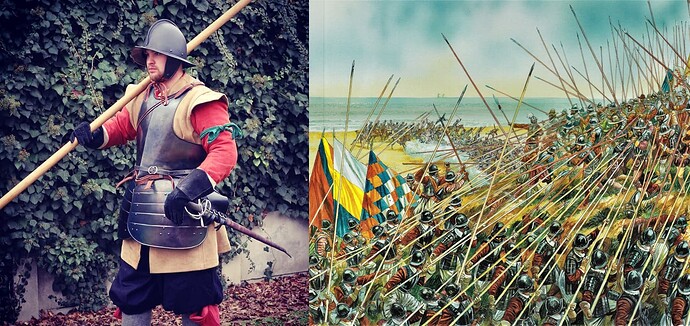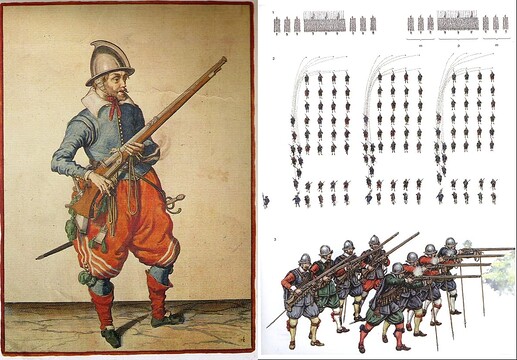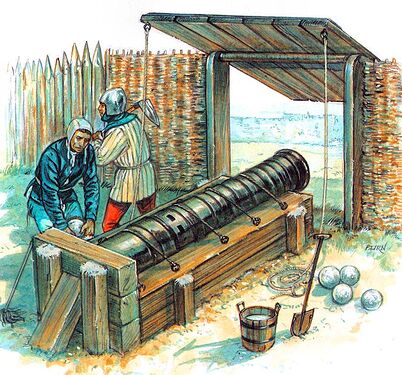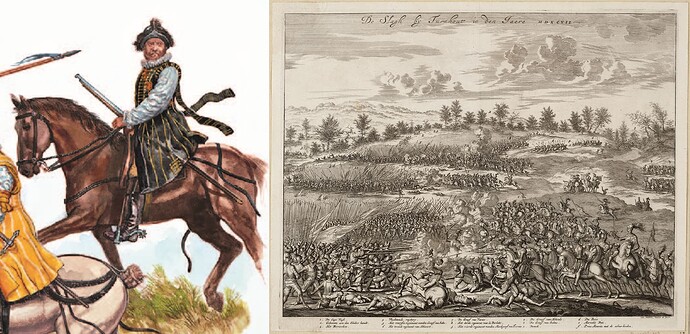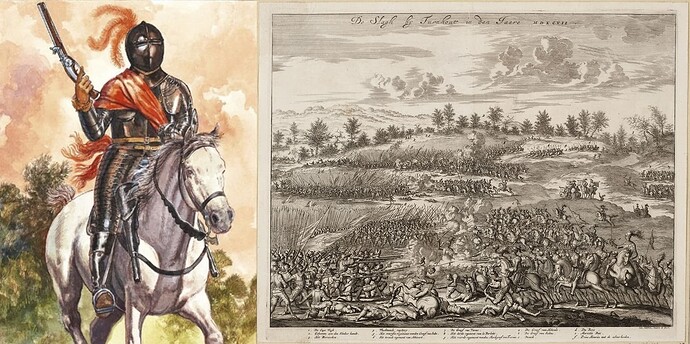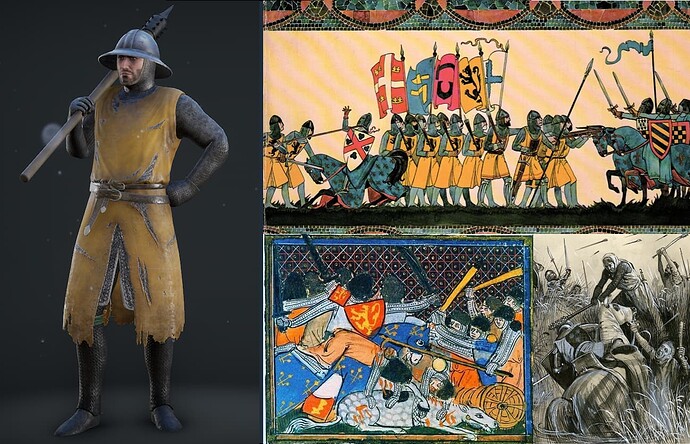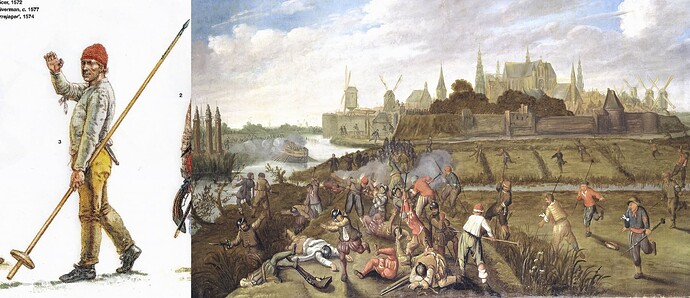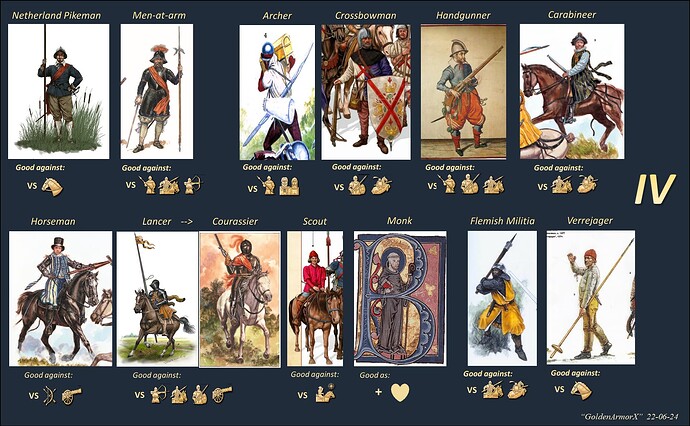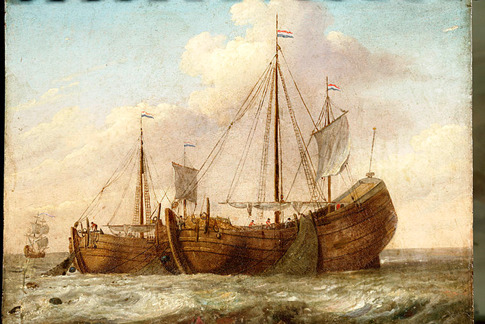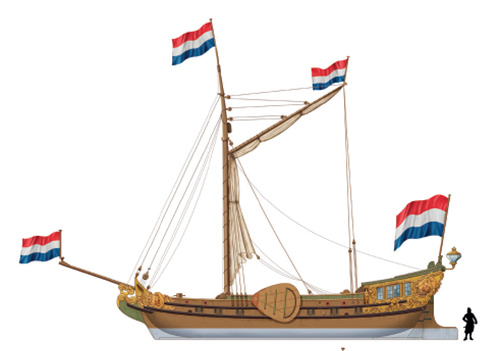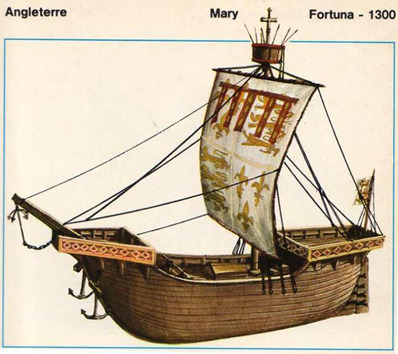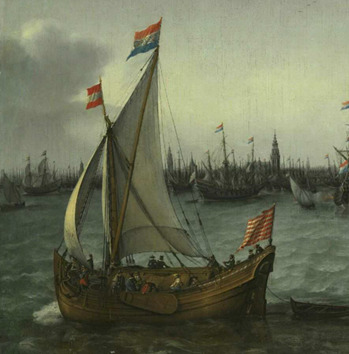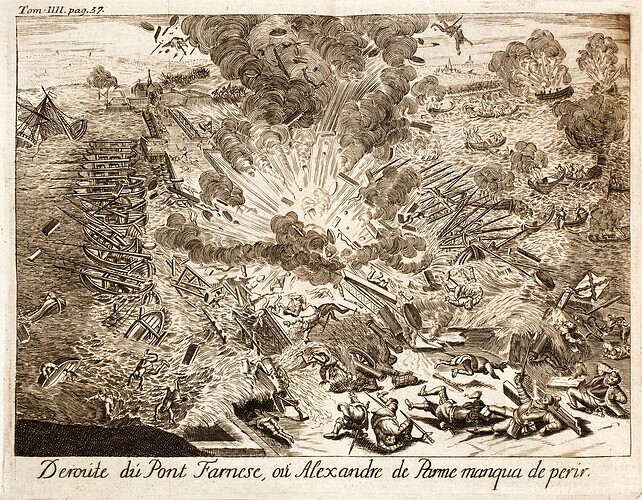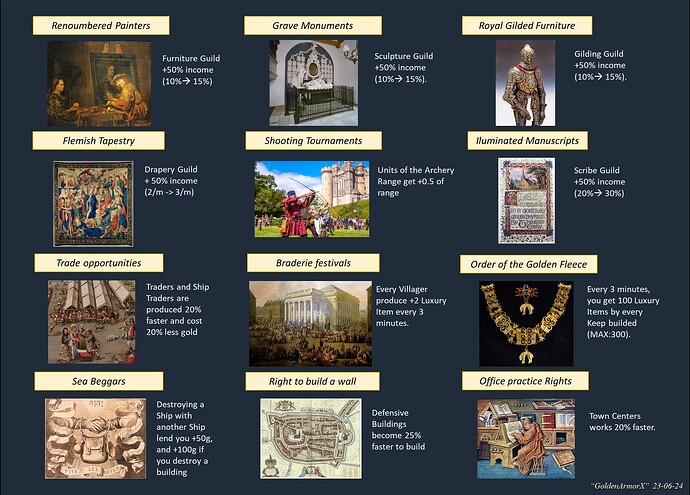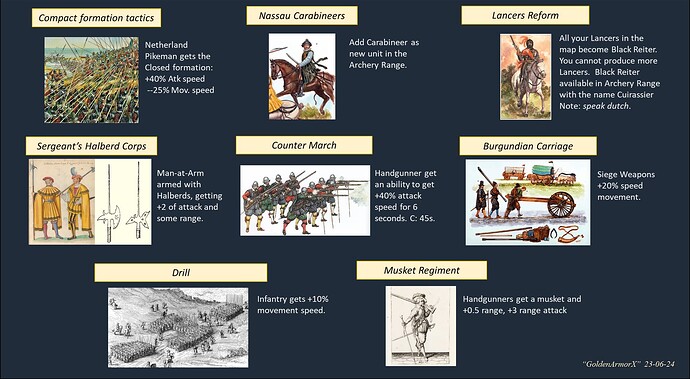==================================================================
Netherland Civilization Concept v1.02
BY GOLDENARMORX - EXTENDED VERSION - PART1
0).- Index
-
Part1:
– 1.- Arquitecture
– 2.- Historical Background
– 2.- Civilization Bonuses
– 3.- Landmarks
– 4.- Unique Buildings -
Part2
– 5.- Unique Units
– 6.- Naval System
– 7.- Unique Technologies -
Part3
– 8.- Campaigns
– 9.- Final Thoughts
1).- Ages - Architecture - Language
I - Medieval Lotharingia – Roman – Old Dutch-Frisian
II - Burgundian Netherland – Medieval gothic – Median Dutch
III - Burgundian Netherland – Medieval gothic – Median Dutch
IV - 7 Provinces United – Renaissance style – Early Modern Dutch
En general la arquitectura es la de los países bajos medievales, pasando por su evolución desde suburbios francos y frisios en la edad oscura con arquitectura romana, a la arquitectura gótica medieval y la renacentista para la edad Imperial.
2).- Hystorical Background.
Click to read a Hystorical Background for the civ
For much of the Middle Ages, the area of the Netherlands and Burgundy belonged to the Holy Roman Empire and France respectively. It was not until 1384 that Philip II of Burgundy, a French nobleman, would inherit both the counties of Flanders, Artois, Rethel and Nevers; which, counting his own fiefdoms in France, made him one of the richest Christian nobles of the time.
The areas acquired from the Burgundy-Netherlands union were very rich for the relative peace beetween France and the Holy Empire, its strength being the production of fabrics in the Netherlands and the wine industry in Burgundy. And the situation only improve: Already in the 14th century, guild production diversified into the field of luxury goods: Paintings, Furniture, Jewelry, Gilding, Sculpture, Illuminated Manuscripts, and even Salted Fish.
With these funds the dukes of Burgundy, who wanted to be their own kings and to achieve independence from France and the Holy Roman Empire, openly declared war on them several times. With an army of mercenaries and guild levies from the counties under their control, the dukes participated in the 100 Years’ War, first supporting France but then betraying them to the English side. Thus they would also annex more and more counties from the surrounding Netherlands.
Due to the large amount of money and craftsmen they had, they were one of the first European kingdoms that invested the most in manufacturing firearms, such as bombards and hand cannons, during the first years of the 15th century. They were even able to afford to copy the French model of ordinance companies (“sacreblu”).
Unfortunately, the attempted kingdom would not last: Money could not buy military tactics, being defeated by the Swiss in the Burgundian Wars (which they themselves initiated), and King Charles I himself dying in battle in 1477 without leaving male heirs. The French zones of the duchy passed to France, and the Netherland pass to the Holy Roman Empire vía the marriage of Mary of Burgundy with Maximiliam I
The Netherlands would also participate in a very important war: The 80 Years War ( [1568-1648] ): After Philip II claimed the Netherlands for Spain, nobles who did not want to pay taxes, using the defense of Protestantism and Freedom as a pretext, rebelled against government of the viceroy Duke of Alba, and began a war that would last, well, 80 years.
Employing another army of mercenaries (with the guilds money), and under the leadership of the House of Nassau, what was Burgundian Netherland would become the United Provinces, but would also be known by the name Dutch. It would be the birth of the worst enemy of Spain, and of many other African and Asian kingdoms to be colonized.
3).- BONUSES
“Mercenaries”/ “Research”/ “Guilds”
– Early Knights available in the Feudal Age (II).
– Early Handcannoneers and Early Bombard available in Castle Age (III)
– Fifth resource: Luxury Goods, obtained by passive Guild bonuses, used to build mercenary armies and could be exchanged for gold on the market.
– Merchants produce Luxury Goods equal to 20% of their trade, and Markets can trade Luxury Goods.
– Produce units from other civilizations as Mercenaries for Luxury Goods in the Mercenary Camp
– Mills are 50% cheaper and their technologies are 20% cheaper
– Herring Moss is a new hugue fishing boat that gather fish faster, 20% of their income become Luxury items.
IN DETAIL (for the Technologic Three)
1.- Luxury Goods
Collect a 5th resource to hire mercenary units. Villagers get luxury items equal to 25% of food gathered in berries (Berry’s dyes), 10% a Vineyard (Wyne), 5% of shore fishes.
You can produce pens to shelter sheep that generate Luxury Good “Wool” and produce sheeps in mills.
Traders provide 20% Luxury Goods based on the amount being traded.
Guilds also collect passively Luxury Goods.
2.- Guilds Warehouse
Special buildings that produce passive Luxury Goods. You can build 1 guild waehouse per age. Each guild can be upgraded from six options, eacth with 1 bonus to enhance Luxury Goods gathering and 1 economic or militar bonus, and a extra unique technology at the Castle Age (III). Each guild builded improves market profits by 5% (Max:20%).
3.- Technological Innovation
Technologies developed 33% faster.
Choose the Town Hall and Leiden University Landmarks to gets new technologies available
4.- Polders Land and Mills
Mills are 50% cheapers, has 30% of discount in its technologies and can produce sheeps.
5.- French Heritage
You have early Lancer (II) in the Feudal Age if you choose the Vineyard Abbey Landmark.
6.- Early Gunpowder Production
Early Handcannoner (III) and Early Bombard in the Siege Workship (III).
7.- Mercenaries
Purchase contracts or establish control of Trade Posts to recruit unique units from other civilizations with Luxury Items at the Mercenary House.
8.- Citizen Militia
Villagers near town centers and Guild Warehouses can be improved with weapons temporally to defends themselves. The choise of weapons wide while advancing of age. Since the Castle Age, the Landmark Town Hall can produce better versions of this militia with a limited lifespan per charges.
9.- Gibbing Float
Herring Moss is a unique fish Boat that ocuppes 2 population but gather fish at the double speed and 20% of their income become Luxury items in the dock.
Unique buildings:
- Guild Workshop
- Mercenary Barracks
- Vineyard
- Shearing Shed
Unique units:
- Netherland Pikeman.- Special Spearman with better attack and incredible range.
- Handgunner.- Early Hand cannoner with a early arquebus. Can be improved by many unique technologies in Imperial age.
- Carabineer.- Produced by Landmark Leiden University. Ranged light cavalry with a Carbine charge attack.
- Armored Militia.- Heavy infantry summoned vía Town Hall Landmark, good against heavy cavalry, slow.
- Verejager.- Light infantry summoned vía Town Hall Landmark, good against cavalry, very fast.
- Herring Buss.- Special Fishboat, that gather faster and also gather Luxury Goods.
- Yacht.- Faster Arrow Ship, with less HP, but cheaper.
- Flyboat.- Replace Carrack as a Warship, cost least population but is faster.
- Hellburner.- Special Incendiary Cheap of Imperial Age, with a humogous damage, but costly.
3).- UNIQUE BUILDINGS
Shearing Shed
Sheep shed. Allows you to shear up to 3 at a time to obtain luxury goods (Wool). You can get more sheep by buying them (50g) at the mills (25w).
In history: The Netherlands is a very flood-prone region, so agriculture was not always safe in the Middle Ages (the sea can wash away crops), so transhumance was preferred in the coastal area. , especially sheep, which can take advantage of the fertile marshy land to graze. Due to the overabundance of sheep, their wool began to be exported, and over time clothing. Flanders became a major clothing competitor in the 14th century, competing with the cities of Italy and even with England, which in the previous century had a monopoly. The wool would later be used for something other than clothing: Tapestries, Flemish tapestries being one of the greatest luxury goods of the Middle Ages and the Renaissance.
VINEYARD
Unique farm of the Civ. It allows food to be produced (Grapes) and 10% to be transformed into luxury goods (Wine). It is similar to the Byzantine version but for Burgundy, with a lower bonus, because wine is obtained slower than oil, and because this civ has extra ways to get its 5th resource. For those who don’t know, the vine is a creeper.
History: Since ancient times the Burgundy region was used for growing wine, first by the Celts, and then by Roman colonies. It was in the 6th century AD that the Frankish king Guntram donated the first vineyard to the Church, and in 910 with the founding of Clunny Abbey the first company dedicated to the mass cultivation of grapes was created. While originally the grapes were used to feed the friars and prepare wine, the surpluses were used for trade, through which many orders such as the Benedictines and Cistercians became wealthy.
Still, Burgundy being a landlocked county, transporting the wine out of the region limited sales. It was not until the 14th century, when the period of the Popes occurred in Avignon, that the area of France became the world ecclesiastical center, so wine sales skyrocketed, especially quality wine. With the addition of the landlocked Netherlands to the duchy’s territories, the export of wine to other kingdoms became big business during the 15th century. To this day, the nickname “Wines of Burgundy” continues to be used to refer to high quality wines.
HOUSE OF MERCENARIES
Building that the Byzantines also have, hehe. I guess the art style will be different. Just like its counterpart, they also have options to choose beetween contracts, and technologies to upgrade your mercenaries to Veteran and Elite versions, while unlock new mercenaries of the same contract. You also can build one of theam near trade post to get more units at your service.
A- British Contract
- 5 Lonbow archers (II) (English)
- 3 Kern Skirmisher (III) (Irish)
- 3 Highlander Gunner (IV) (Scottish)
C- Burgundian Contract
- 3 Royal Knight (II)
- 3 Veteran Genoese Crossbowman (III)
- 3 Saboyan Pistoleer (IV)
B- German Contract
- 3 Swiss Pikeman (II)
- 3 Landsknecht (III)
- 3 Tercio Arquebusier (IV)
History: The armies of Burgundy-Netherlands were full of mercenaries. Since the House of Burgundy conspired with the English to ruin France, Longshot Archers have always been in the ranks of every Burgundian army. They also hired German and Italian mercenaries. According to estimates, about 30% of the troops were mercenaries or allies. The duchy could afford these mercenaries thanks to the large profits of the guilds of the Netherlands.
In fact, once the Burgundian period was over, in the 80 Years’ War, William of Orange’s armies were largely made up of French, English, Italian, German mercenaries and traitors from the Spanish side. To pay them, instead of money, Guillermo collected something with a similar value and that had been amassed without being sold since the war began: Luxury Items. It would not be until Maurice of Nassau, William’s son, focused on improving the new kingdom’s own army that the mercenaries would decrease in number, but never disappear.
GUILD WORKSHOP
Guild workstation. You can build 1 per Age. Generates luxury items over time, and allows you to activate bonuses to obtain luxury items. It is an active bonus for a new Guildworkshop:
1.- Spinning Guild.- (Cattle) Improves obtaining luxury items from cattle shearing by 50%.
2.- Furniture Guild.- (Wood) Obtain luxury items from wood collection, ratio 1/10
3.- Jewelry Guild.- (Gold) Obtain luxury items from gold collection, ratio 1/10
4.- Guild of Sculptors.- (Stone) Obtain luxury items from stone collection ratio, 1/10
5.- Guild of Scribes.- (Technologies) You obtain luxury items by developing technologies, cost ratio 1/10.
6.- Marksman’s Guild.- (Archers) You get luxury items by producing range units, 1/10 cost
Additionally, developing each guild includes an extra “Passive Bonus”.
Note: They could also become extra unique technologies, it depends on how your balance is better.
1- “Cheap clothes” - (Cattle).- Villagers cost 20% less food (50f → 40f).
2- “Furniture discount” - (Wood).- Non-economic or defensive buildings cost 20% less wood.
3- “Royal and Monastic Gilding” - (Gold).- Knights, Men-at-Arms and Monks cost 20% less gold.
4- “Efficient construction” - (Stone).- Landmarks are built 20% faster
5- “Cheap manuals” - (Technologies).- Technologies are 15% cheaper.
6- “Guild Training” - (Archers).- Ranged units are produced 20% faster.
It also allows you to develop 1 Technology per guild to increase the obtaining of luxury items over time:
1.- Ambitious Tapestry (III).- Increases the ratio obtained by sheep by 50% (Sheep).
2.- Illuminated Manuscript (III).- Increases the ratio obtained by 50% (technologies).
3.- Renowned Painters (III).- Increases the ratio obtained by 50% (wood).
4.- Royal Guilding (III).- Increases the ratio obtained by 50% (gold)
5.- Memorial Sculpture (III).- You get +5 luxury item every time a unit dies.
6.- Shotting Competitions (III).- Increases +0.5 the range of ranged infantry.
History: Although almost all medieval European kingdoms had a guild system, that of the counties of the Netherlands was special: Due to the freedom that the Holy Empire gave to its subjects, the counties of the Netherlands had quite a bit of freedom to sell or produce what they wanted without being limited by national production or disrespectful tariffs.
On the other hand, while other guilds of kingdoms were focused on satisfying the daily needs of their inhabitants, such as food, clothing and housing, the Netherlands focused on selling luxury goods, which only nobles and rich people could afford, thus as cheap quality merchandise that rivals the guilds of other kingdoms. They first ventured into the wool and clothing market. With the inclusion of Burgundy, wine could now be exported. Finally, the Painting market, Tapestry embroidery, and gold plating appeared, all of which made the guild merchants quite rich. Much of this wealth was used by the Dukes of Burgundy to finance their armies in their expansive period, as well as to pay mercenaries during the 80 years war.
4).- LANDMARKS
====================
Cloth Hall
II.- Cloth Hall.- Act as a Market, Based on the cloth halls that exist in Bruges, Brussell and Ghent.
Permit a constant little supply of gold (25g/m) for every Guild builded. Also, produces 2 traders for each guild builded or to build.
– Holy Roman Empire Heritage: Enables early Men at Arm in the barracks
History: The Netherlands was known in the Middle Ages for its large textile industry. The phenomenon originally began in Flanders in the 14th century, and spread to other cities. The success was so great that the town councils decided to build public buildings for the clothing trade. These “cloth markets” also traded other products, and sometimes they were so well decorated that they even stood out from the town hall and the Plaza Mayor Church. Some, like the Ypres Cloth Market, still maintain the great splendor of the time they were built.
Vineyard Abbey
II- Vineyard Abbey.- Based on the Abbey of Cluny. It acts as a mill and as a temple. Increases the production of goods from nearby vineyard farms by 60% (10->16%), and food production by 10%.
– French Heritage: Enables early lancers in the stables
History: “Since ancient times the Burgundy region was used for wine growing, first by the Celts, and then by Roman colonies. It was in the 6th century AD that the Frankish king Guntram donated the first vineyard to the Church, and in 910 with the founding of Clunny Abbey the first company dedicated to the mass cultivation of grapes was created. While originally the grapes were used to feed the friars and prepare wine, the surpluses were used for trade, through which many orders such as the Benedictines and Cistercians became wealthy.”
“Still, Burgundy being a landlocked county, transporting the wine out of the region limited sales. It was not until the 14th century, when the period of the Popes occurred in Avignon, that the area of France became the world ecclesiastical center, so wine sales skyrocketed, especially quality wine. With the addition of the landlocked Netherlands to the duchy’s territories, the export of wine to other kingdoms became big business during the 15th century. To this day, the nickname “Wines of Burgundy” continues to be used to refer to high quality wines.”
Count Castle
III.- Count Castle- Counts as Keep. Allows the formation of Batallions of Burgundian units in groups 50% faster of the normal time.
- Burgundian Ordinance: 1 Knight, 1 Horseman, 1 Archer
- Ordinance auxiliary: 1 Netherland Pikeman, 1 Crossbowman, 1 Handgunner
- Netherland Artillery: 1 Early Bombard
History: During the Middle Ages, the cities of the Netherlands always had a competition between nobles and merchants over who dominated the city. As a way of imposing authority, as well as to give the people the image of being protectors, the nobles built castles on the edges of it, often as imposing barbicans. This became so common that most city states in the Netherlands had their own castle, sometimes small, the size of a barbican, and sometimes more impressive, depending on the funds of the noble in charge. This is the case of Gent Castle, which is right on the edge of the city, acting as a fortress and barbican for the city. Durante el tiempo de la Unión de Burgundian Netherland, el edificio dejo de ser un palacio y se volvió la sede del poder judicial de Ghent. After the 80-year war, the building became a manufacturing workshop or hostel for workers. Currently, the building was recovered by the city council as a historical monument.
Town Hall
III.- Town Hall.- Has some unique economic technologies to improve villagers and traders. Allows the generation of Flemish militia based on charges generated every minute, but they only last for a while. There are two types: Armored militia (III) and Verrejager (IV).
- Right to celebrate Braderies (III).- Every 3 minutes, each villager generates 3 luxury item.
- Right to wall a City (III).- Villagers build defensive buildings 25% faster
- Right to learn to read (III).- Villagers are produced 20% faster.
- Right to open a market (III).- Traders cost 20% less gold, and are produced 20% faster.
During the Middle Ages, almost all cities in the Netherlands always had a town hall. Due to the lack of an official capital for the kingdom of Burgundian Netherland, the main cities were expected to have a town hall to match if the king or his magistrates and court decided to move there. For this reason, its size and splendor had to match the state of the city, which is why many nobles and sometimes even guild leaders invested in improving the structure.
The Brussels City Hall is a great example, built in 1401, it was expanded several times over 55 years, supported by architects such as Jacob van Thienen or even Jan van Ruysbroek, court architect of King Charles the Bold himself. Because the building received many design changes and investment, it ended up with a larger left wing than the right, but it is still one of the emblematic wonders of the city. It burned down in 1695 during a French siege, but it was so beautiful that it was ordered to be rebuilt, and even remodeled several times to recover its original form, and it is practically the only preserved building from medieval Brussels that remains standing to this day.
Hall of Knights
IV.- Hall of Knights.- Increase the production of Mercenaries by 40% speed, and reduce their cost in 15%. Also, research the unique technologies of the mercenaries of their respective civs. Also act as a mercenary camp with new gunpowder units of the Imperial Age.
- Huguenot Artillery.- Summon 1 French Cannon
- Nassau Regiment.- Summons 3 Carbineers, a unique Dutch mounted gun unit.
- German Regiment.- Summons 3 German Sweirze Ryters.
- Scottish Higlanders.- Summons 3 Scottish Higlanders.
History: The Binnenhof is a building complex located in the city center of The Hague, Netherlands, next to the Hofvijver pond. It has the Ridderzal as its central building, and it has been used as a political headquarters by many powers throughout the history of the Netherlands.
The building went through several owners, from the house of Holland to that of Hainut and even that of Bavaria, and at the time of the House of Burgundy, the complex became the residence of the stadtholder of Holland, who governed the county in absence of its ruler.
During the 80 Years War, the complex would become of utmost importance as it would become the headquarters of the resistance of the new States General of the Dutch Republic, where they planned their strategic meetings, as well as the new residence of their boss, Maurice of Nassau. . Currently the building has enough presence to house the Cabinet of the Netherlands, the highest executive branch of the country, as well as to be declared a national monument (Rijksmonument).
Leiden University
IV.- Leiden University.- Act as a University, and has new technologies for many of your unique units.
- Countermarch (IV).- Handgonners acquire the countermarch skill, +40% firing rate for 6 seconds, c:45s.
- Compact Formation (IV).- Netherland Pikeman gains Compact Formation: +40% Rof, --25% speed.
- Nassau Regiment (IV).- Enable the Carbineers in range archery. Lancers gets a Carbine Charge Attack
- Drill (IV).- Infantry and Cavalry units gets +10% movement speed.
History: Leiden University was the first formal University in the Netherlands. It was founded after an important event: The Siege of Leiden in 1574 by Spanish forces. The siege lasted several years without the inhabitants surrendering and only the intervention of the Duke of Orange could save the city. In reward for having been faithful to the revolution, the Duke proposed between lowering the city’s taxes permanently or financing a university; the inhabitants voted for the latter. The university was not actually built, it was based on old religious monasteries requisitioned by the Protestants, until the Academiegebouw (former chapel of a Dominican monastery) was occupied as the central campus. Even so, the University expanded its campuses to several buildings in the city, with the proposal that a free professorship be given to investigate any branch of knowledge desired without restrictions. The University is known for having hosted many dons of the era, including Justus Lipsius, Joseph Scaliger, Franciscus Gomarus, Hugo Grotius, Jacobus Arminius, Daniel Heinsius, and Gerhard Johann Vossius. Currently up to 16 new awards have come from this university.
Coudenberg Palace (Wonder option N°1)
Wonder.- Coudenberg Palace.- Based on the building of the same name. One of the greatest palaces in the Netherlands area, mainly during the period of the House of Burgundy.
History: Built on top of an old fortress in the area of Brussels, Coudenberg Palace was a historic building in the history of the Netherlands. Remodeled into a palace by Count Louis II, during the period of the Dukes of Burgundy, it was used several times as the seat of Government. It was in this palace that Mary of Burgundy ceded control of the Netherlands to her grandson Charles V. It was also here that Charles V abdicated in favor of her son Philip II. The castle was remodeled several times and expanded in the 15th and 16th centuries in the late Gothic style. The Palace remained in the hands of the Spanish monarchy during the period of the 80 years war. Several of the festivals of the Order of the Golden Fleece were also celebrated there. Unfortunately the palace was destroyed in a fire in 1731.
Church of Our Lady (Wonder option N°2)
Wonder (2nd option).- Church of Our Lady.- Based on the building of the same name (in Antwerp). Its most iconic characteristic is its enormous Bell Tower. There are another examples but the point is that this would be in case we consider that the Couldelberg palace is one of the 6 landmarks, replacing one of the previous ones.
History: Usually, the cathedrals and imported churches of Netherland have a tall Bell Tower, more taller than Italians, which are different because those usually are long but wide, while those from Netherlands are long and thin. There are many examples like the Church of Our Lady in Bruges (115m), The Churh of Our Lady in Antwerp (123m) the Church of Saint Nicholas in Gent (76 m), or the Cathedral of Saint Rumold in Mechelen (97m). Usually this was done so that the main church could compete in eminence with other towers in the city, whether of the Town Hall or the Cloth Hall. The results were that the city center was visible from very far away: You just had to go where the biggest towers were.
